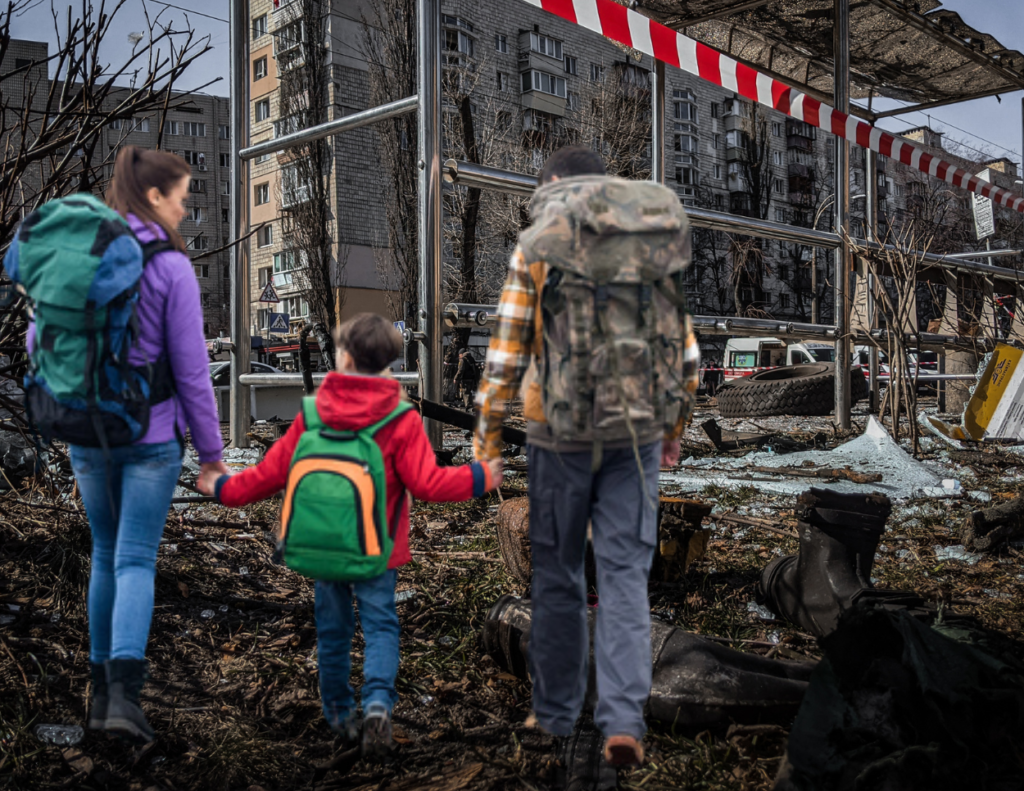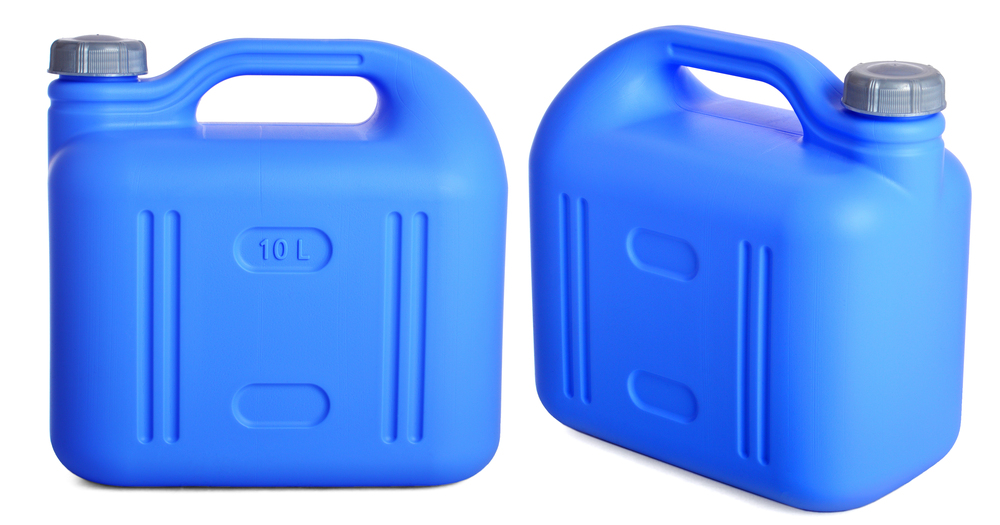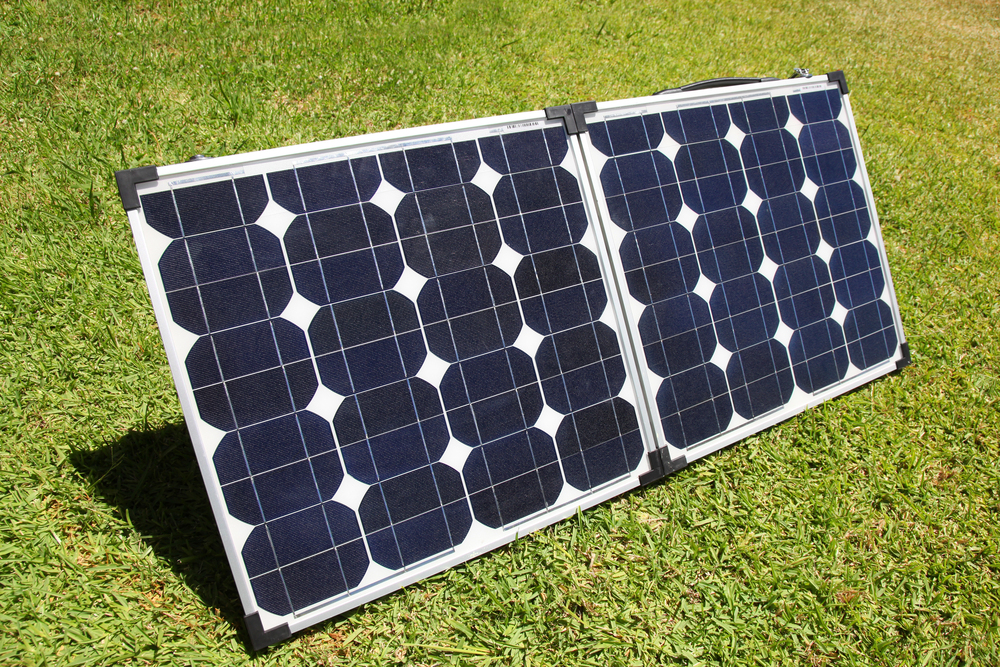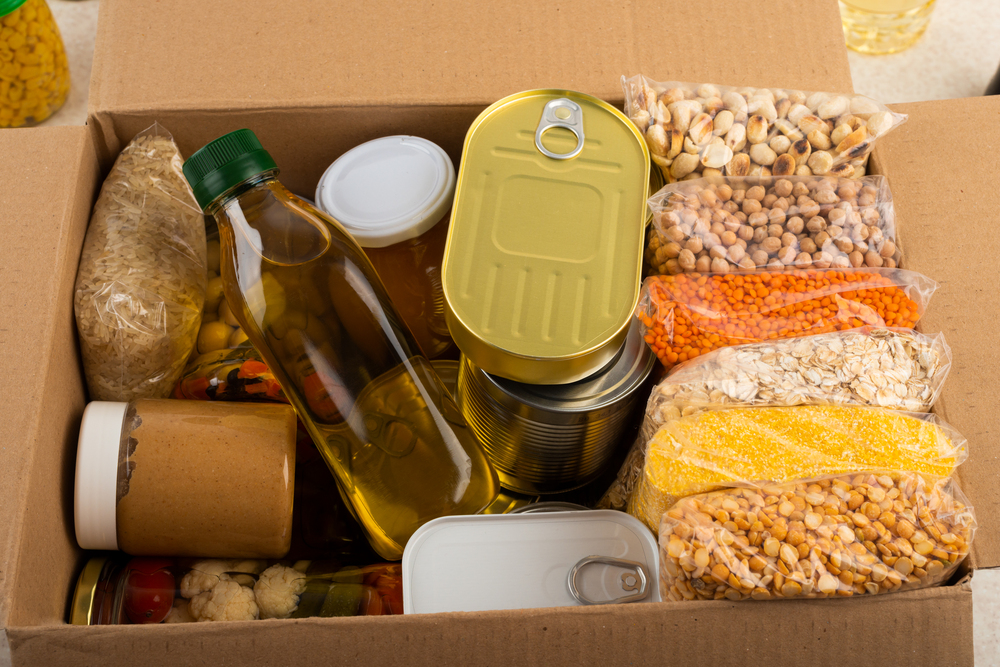None of us know where we’ll be if/when SHTF. As they say, “Nobody expects the Spanish Inquisition.” Or that the apocalypse will happen when we’re at work or at little Jonny’s baseball practice.
Nobody expects a forest fire or earthquake to drive them from their home. Nobody expects a terrorist attack to hit their city or town.
We can’t control external events, but we can be more prepared for them. There are lots of different ways that we can pack for the apocalypse, whether it’s short-term or long term, and one of them is going to be to decide what you should have with you – bug out bag vs. everyday carry vs. INCH bag.
Disclosure: There are affiliate links in this article and I may get commission if you purchase through these links. It will not cost you anything additional, and helps support this site!
First, let’s define the terms.
1.) A bug out bag, which is sometimes referred to as a 72-hour bag, is meant to contain a few days worth of survival supplies in case you have to flee your home and head to a secondary location. You’re bugging out; you’re leaving. It’s not meant to sustain you forever; no backpack that a human can carry can contain enough supplies to do that. Instead, you fill it with bug-out bag essentials such as food, water, first aid supplies, a change of clothing, a lightweight tent, and some very basic tools.
2.) Everyday Carry, or EDC as it’s known in the prepper community, are the survival supplies that you have on you every single day. Your EDC kit basics could contain a multi-tool, a pocket knife, a small flashlight and maybe some extra batteries, water purifying tablet, some granola bars or nuts, and a small first aid kit. You can find TINY first aid kits. Depending on the laws where you are, it might include a gun and bullets. Your EDC will see you through minor emergencies but won’t sustain you long-term.
3.) An INCH bag is an “I’m Never Coming Home” bag. You have no hope of being able to return to your house. Civil war, massive raging forest fire, nuclear war, those pesky zombies…You are not going to lay low and return. This is it. You and your family are fleeing and your house is dunzo, toast, etc.
Which Type of Bag/EDC Kit Should You Have?
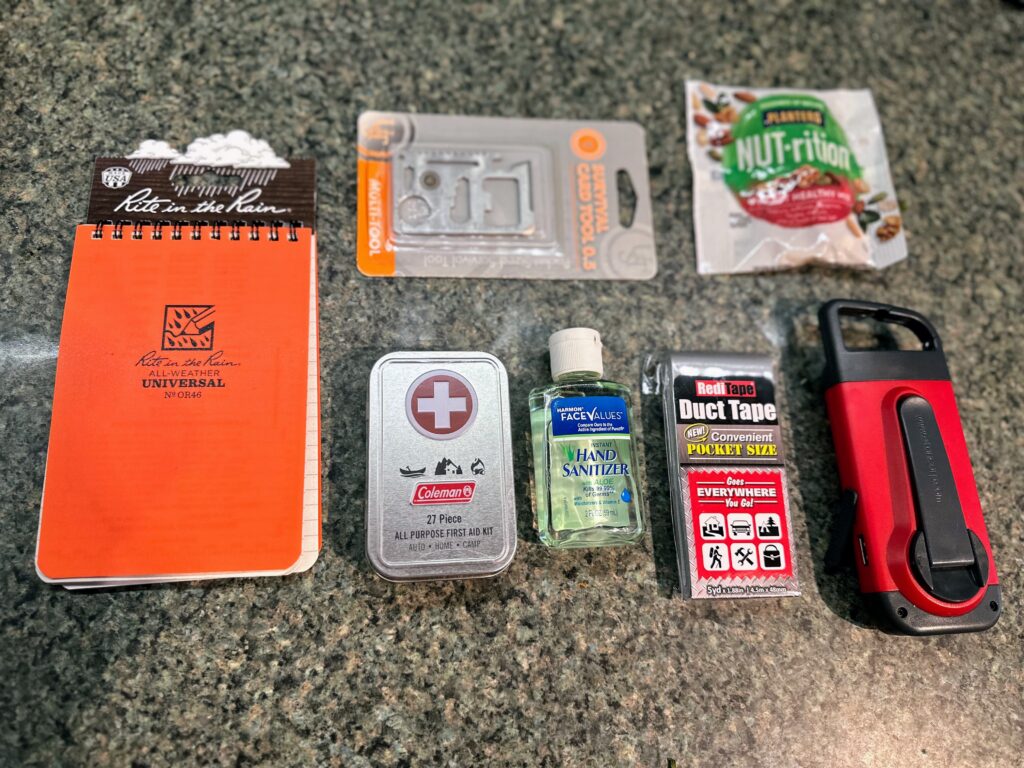
Step One
If you’re just getting started prepping, then start out with building up your EDC Kit. It will take very little money unless you decide to buy fancy expensive gear, and this is what you are most likely to use 99 percent of the time. In addition to your house and car keys, cell phone, a knife, multi-tool, flashlight, and granola bars, some other things that you can put in your everyday carry kit are an extra battery backup, a tiny first aid kit – I bought one, but you can also make one yourself using an Altoid’s tin, a notebook and pen, a pack of waterproof matches, a space blanket which retains heat and can also be used as a tent…the list goes on.
Some people consider their guns as part of their EDC.
The main thing to remember with your every day carry is, you don’t need to pack everything (even though I am a monster over-packer and my purse weighs as much as a newborn baby). You are going home at the end of the day.
Also, if you have some emergency snacks in your everyday carry, remember to rotate them out regularly.
Where do people stash their EDC? Lots of places. Pants pockets. (Cargo pants are great for EDC.) A shoulder bag. A purse. A pouch strapped to your belt. Jacket pockets.
Step 2
Next, you’re building your bug-out bag.
Now, if we all had the strength of Arnold Schwarzenegger back in his glory days, we could stuff enormous amounts of supplies into our bugout bags and especially our INCH bags. Unfortunately, that’s not the case for most of us. It is recommended that a backpack weigh no more than 10 percent of your body weight – 20 percent if you’re incredibly fit. This is especially true if you end up on foot, walking for miles with your family.
The bug-out bag is what you’ll need if you have to flee your home but you expect to be able to return sometime in the reasonably near future.
It’s got basic supplies to feed you for at least a few days, and to sterilize water as you travel. If you and your family find out that you can’t get back home, you’ll have enough in the bug out bag – change of clothing, medications, basic shelter if you need it, mini camping stove and camping pot and utensils, towel – that you’d be okay for weeks if necessary, as long as you can find food and water.
In a truly disastrous situation, you might end up having to loot stores for your food, or empty houses. Hopefully you’d be making your way to a safe secondary location. The next best option at that point would be to find a group of people – safety in numbers! – and form a plan to get food, water and shelter for everybody. But, with your bug out bag, you’d be able to wash your clothes and rotate your outfits, and you’d be able to cook food in your cooking pot and eat it with your utensils, and open cans with your can openers.
Step 3
Should you pack an INCH bag? The INCH bag is a controversial subject among preppers. An INCH bag is meant for long-term survival in the woods.
Some people have a fantasy that they’ll pack up supplies and go all Grizzly Adams and leave nasty old civilization behind. Most people who think that, have not actually tried to survive in the woods for months on end with nothing but the supplies in their backpack.
Even if a person/family finds a source of running water, and even if they are in a climate where they won’t freeze to death…most of us modern humans have not developed the necessary skill set to survive.
Yes, ancient humans were hunters and gatherers, and they made their own primitive shelters to protect them from the elements, and they even made their own tools. But they grew up with parents and a community that were intimately familiar with their local eco-system, and they learned how to hunt and find water and what plants were safe to eat, from the time they could toddle. They were also on the move all the time, which means they were much more physically fit than most people today.
And, very importantly, they were travelling in groups. The groups could fight off wild animals and also other, hostile groups. If it’s just you and your family heading out to the wilderness, you’ll be very vulnerable.
So what would you pack in your INCH bag, that would be different from what’s in your bug-out bag? For an INCH bag, you’d want hunting gear, fishing gear, and snares. You’d also need to make sure that you have seasonally appropriate clothes; if it gets brutally cold where you are, but you’re bugging out in teh summer, you’d still need to have winter boots and a winter coat.
You’d focus less on things that relied on batteries, so, an oil lantern rather than a battery-operated lantern. You can actually use fat from an animal that you’ve hunted, once you’ve run out of oil, ikn a pinch.
You’d need tools to help you build shelter, such as a decent saw, axe, several knives, and a strop to sharpen your knives. Remember, you’re never coming home and you will need to be able to sharpen your tools where you are.
If you’re literally living in the woods, you need the ability to find water when SHTF. You’re not just trying to survive a few days, you’re trying to survive forever. Eventually you’ll run out of water purification tablets, and water filters are generally only rated for a certain number of uses, so you’d need several cooking pans to make sure that you always have the ability to boil water.
In a bug-out bag, you might carry cash and personal documents. For an INCH bag, we’re talking total societal collapse – why bother?
The most important advice that I can give about INCH bags is, unless you are an expert at bushcraft and hunting, don’t try to pursue a fantasy where you and your family can survive in the woods on your own long-term. Don’t bother with the INCH bag until you’ve taken multiple multi-day bushcraft classes (I’ve taken several and they are so awesome!), and until you are confident that you can hunt your own game and build a shelter for both you and your family.
I’d also suggest that if you’re planning on living in the woods, you’d be better off partnering with several families who are as capable as you are, so that you can support each other. Someone is bound to get sick, to get injured, and the healthy parties can take up the slack while that person heals. A larger group can get more done, can work together to build shelter, and can stand watch at night, and fight off animals and thugs who want to steal your stuff.
An INCH bag alone is not going to keep you alive forever.
So, now you have the rundown on bug out bags vs. everyday carry vs. INCH bags, and I hope that helps you with your decision as to what to pack, and also what kind of training you should pursue if you go the INCH bag route.

